At the time of writing this blog post, Chernobyl has been off-limits to visitors for a number of years. It closed originally as part of the travel restrictions during the Covid-19 Pandemic. However before the restriction could be lifted, it was the scene of a Russian invasion,
I visited Chernobyl in May 2014, so quite a while ago. My understanding though is that the regulations, the processes, and the trip styles, haven’t and won’t change a great deal if and when access is permitted again, It is a very regulated place to visit, and with good reason.
How did you visit Chernobyl?
I went with an organisation then known as Chernobyl Welcome (branded as ChernobylWel dot com), who have since rebranded as ChernobylX. There were a group of 16 of us in total, mostly, if I recall, people around my age, who’d been alive at the time even if they didn’t necessarily remember it. I do recall one chap from Czechia who had a 1960s camera, a bulky thing with film that took only 10 pictures. He’d take a pic with a digital camera, make sure it was right, then take a shot with the film camera. Yes he agreed it was awkward to carry and expensive to use, but he assured us the quality of the final picture was excellent. We never saw if he was right or not, obviously.
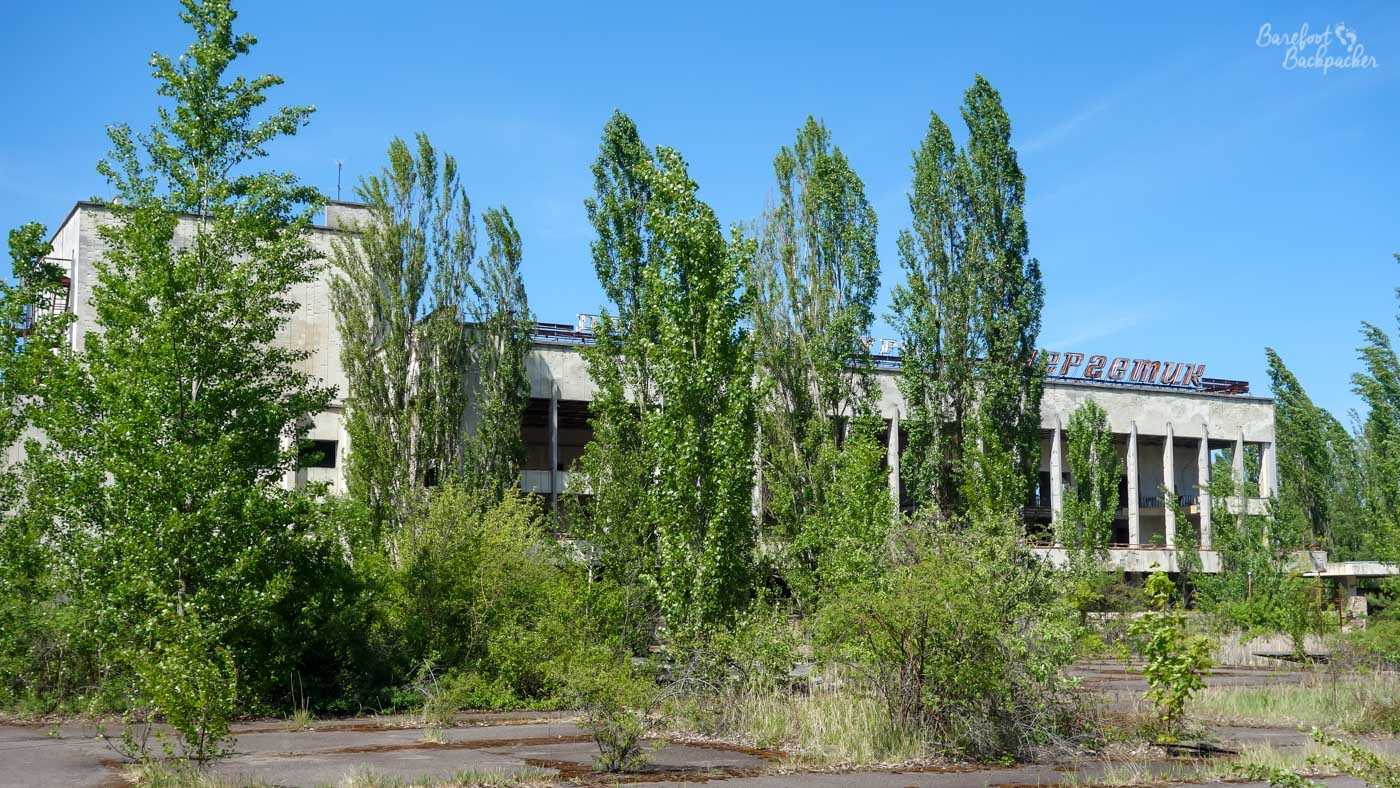
One of the buildings in Pripyat.
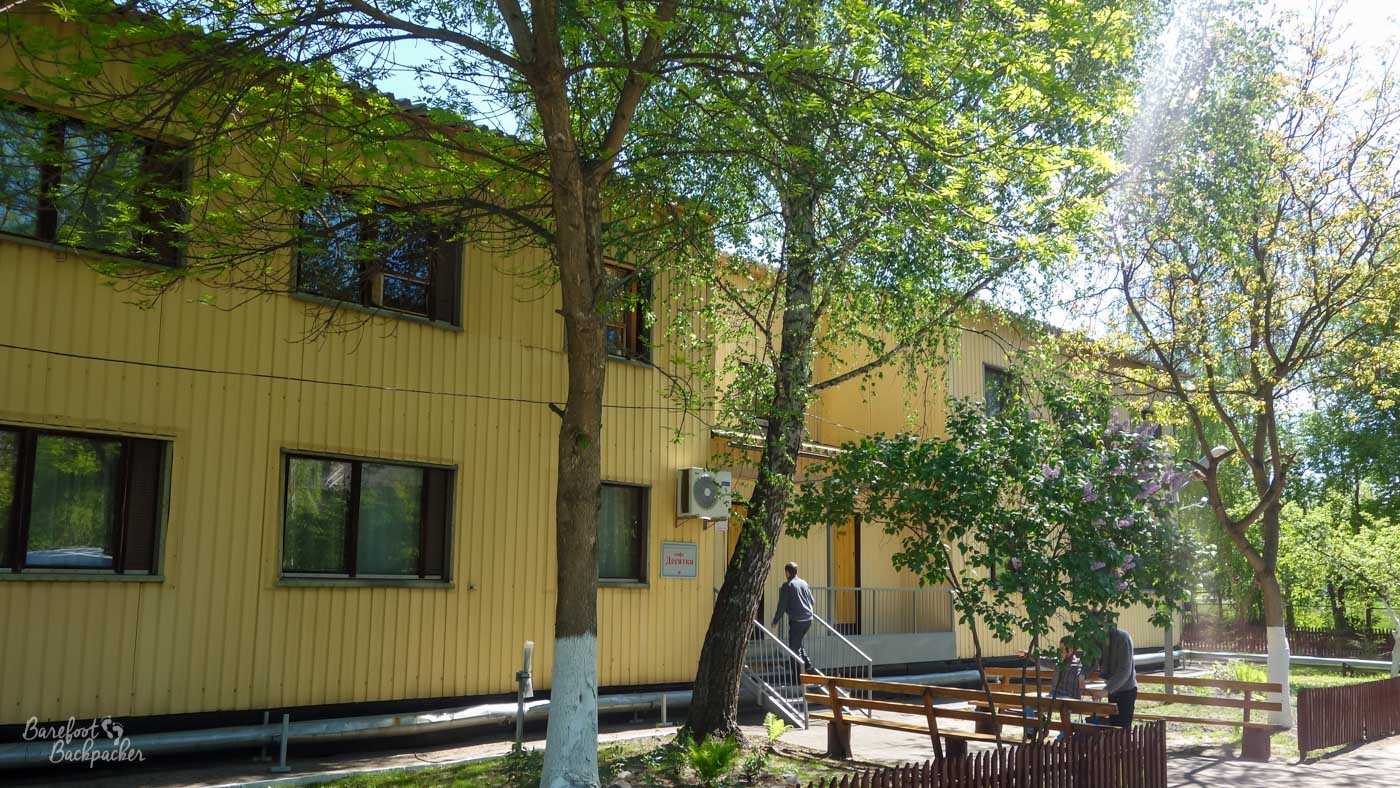
The hotel we stayed in at Chernobyl City.
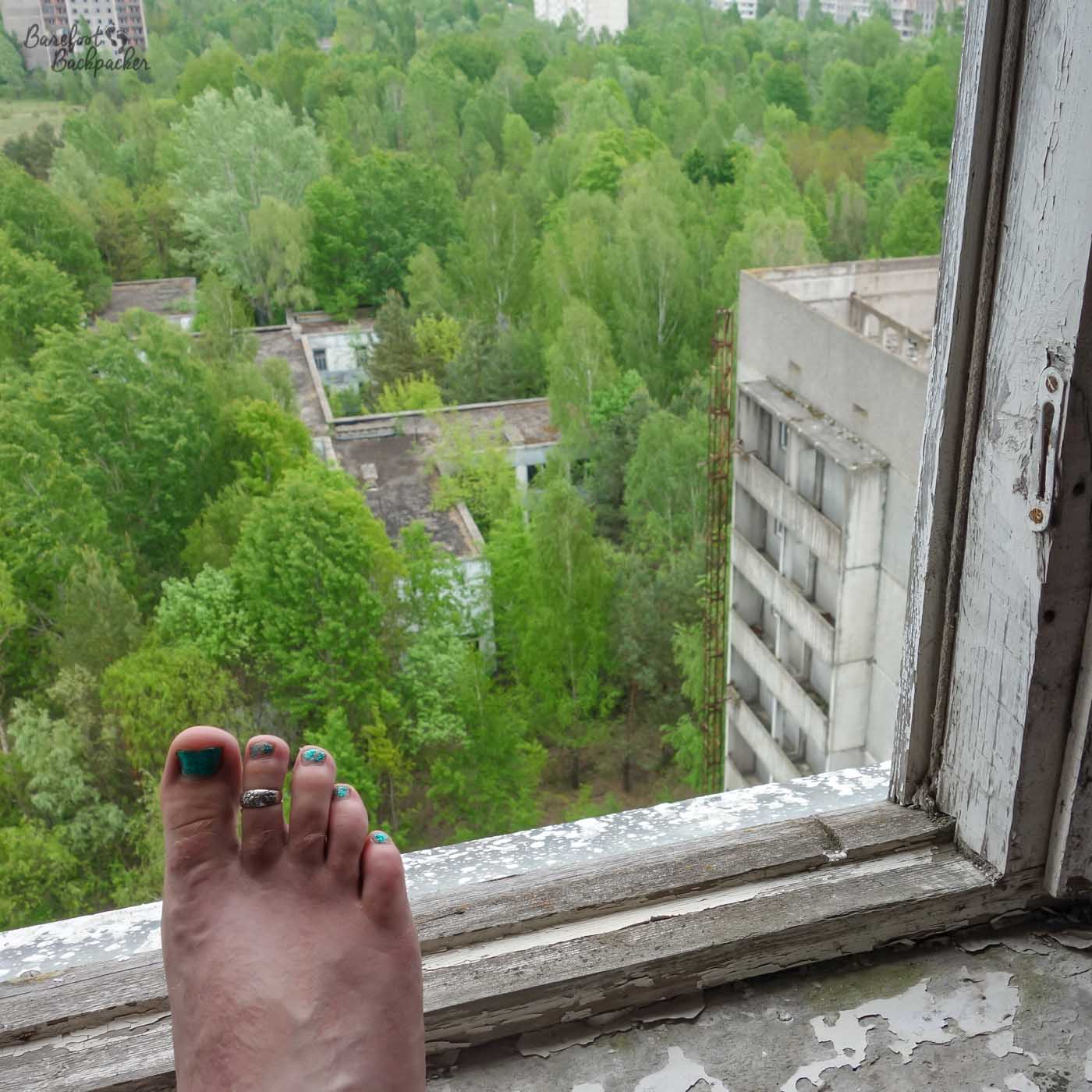
On the whole year-long adventure this was a part of, I was taking one barefoot-selfie a day; this was all I could do in Pripyat and I probably shouldn’t even have done that!
Why did you visit Chernobyl?
I was 10 and three quarter years old at the time of the explosion, and my memories of it happening are limited to sheltering under an awning during a PE lesson in the large playground at primary school, wondering if this was the ‘acid rain’ people talked about. Though I watched the news and knew ‘what’ had happened, everything else was ‘Adult Stuff’ to me, and I was more concerned with my Panini football sticker album. But while it itself didn’t seem to register itself much, it did lodge itself in there as an indexable event. That is, I don’t remember much about what happened, but I absolutely recall that it *did* happen and it was an important event. What helped this may have been the many charity events and collections that took place both in the immediate aftermath and in the years beyond – when I moved to Ashfield in 2005, I saw a charity shop called ‘Chernobyl Children’, raising money for people who, by then, would have been having their own children.
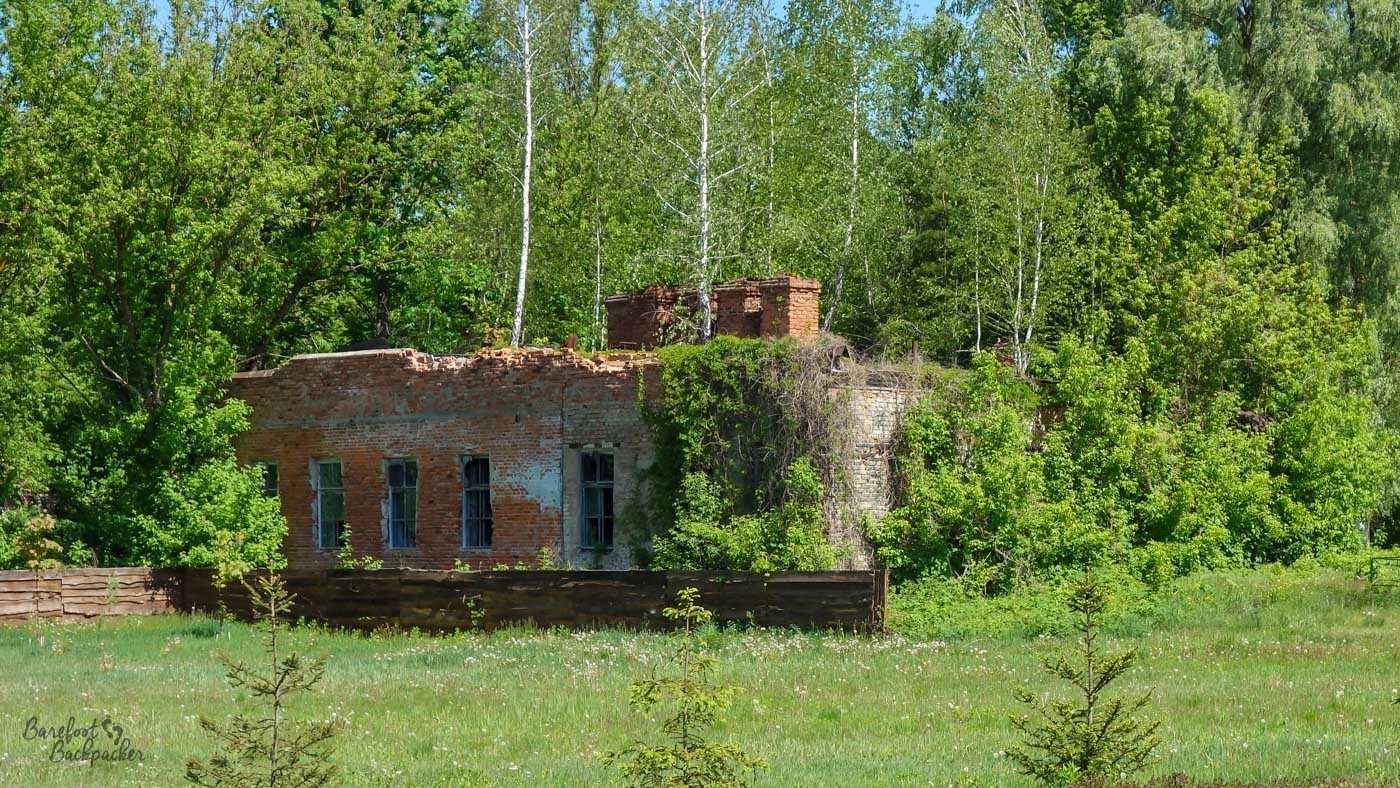
One of the ruined buildings in Chernobyl City
What happened at Chernobyl?
The explosion at Chernobyl is one of those places and events that’s become significant in culture as well as history, like Pearl Harbor. Even if you don’t know the precise details you know the basics and the significance, regardless of how old you are or where you live. But just in case you need a refresher, here’s a very brief overview:
Chernobyl’s name comes from Slavic language ‘chorny’ (black) and ‘byl’ (grass), referring to wormwood, the plant that’s used in making absinthe. It’s in a mostly forested region near the Dnieper River, slightly ‘out of the way’ (90km north of Kyiv in a straight line, a signpost at the 10km exclusion zone says by road it’s 131km), and bordering Belarus, The area has been definitively populated since the end of the 12th Century, but its location was seen as ideal for construction of a nuclear power station in 1972; near a river, easy to get to by land, yet far enough away from major population centres like Kyiv to be secure. The main purpose though seems to have been to provide power to the nearby Duga Radar Array.
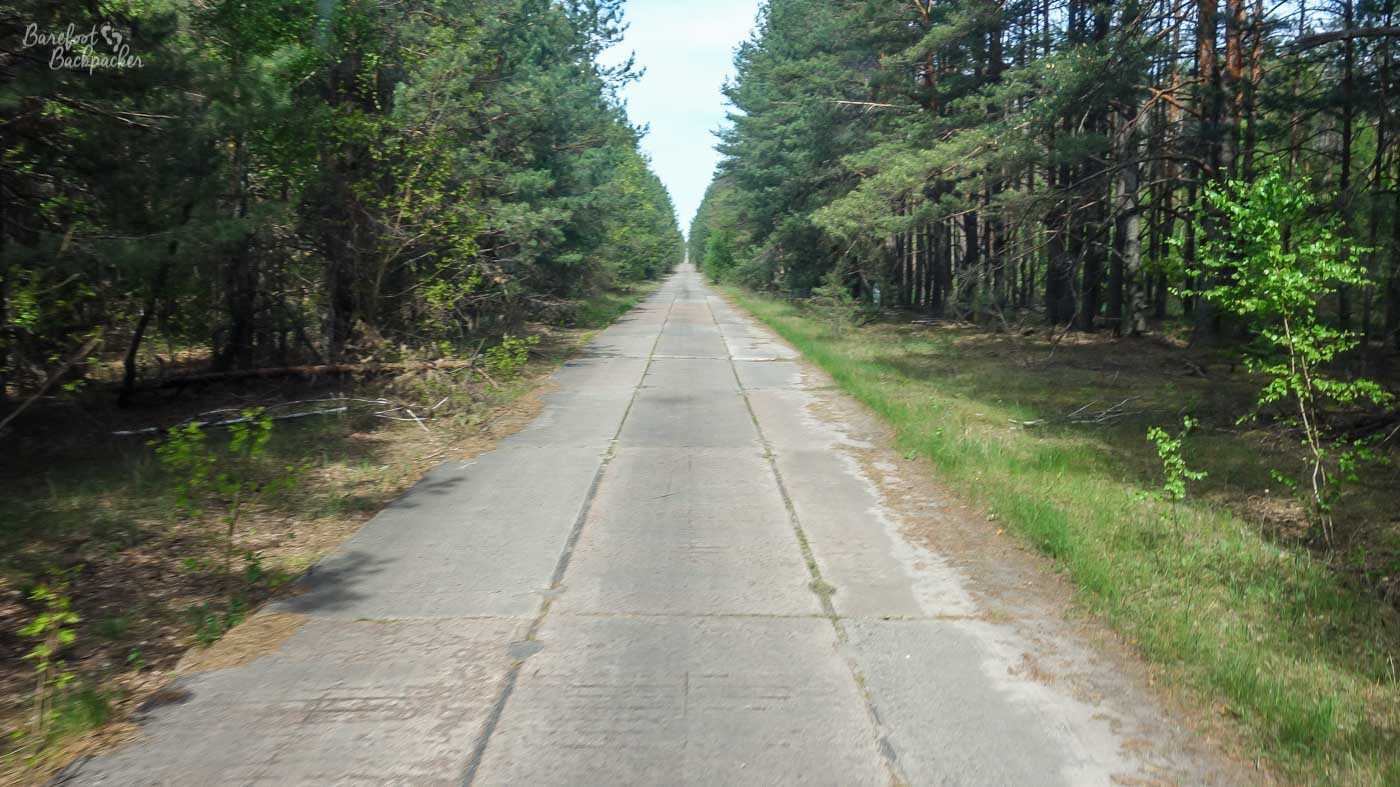
The road to the Duga Array, just outside Chernobyl City
On 26 April 1986, at 01:23, reactor #4 at the plant blew up. It was as a result of a series of small failures in procedure following a safety test; a combination of user error and bureaucratic regulation, easily preventable with hindsight. The fire brigade were brought in to dampen the initial fires, but the other reactors kept running throughout. Reactor #3 was only shut off at 05:00 because its roof was on fire. Additionally, in the following days, a series of helicopter flights over the reactor took place. These tried to dump as much sand and other radioactivity-absorbing material onto the reactor to, if not quench the fire, at least prevent as much radioactivity leaking out as they possibly could. It worked, but at a relatively huge loss of life.
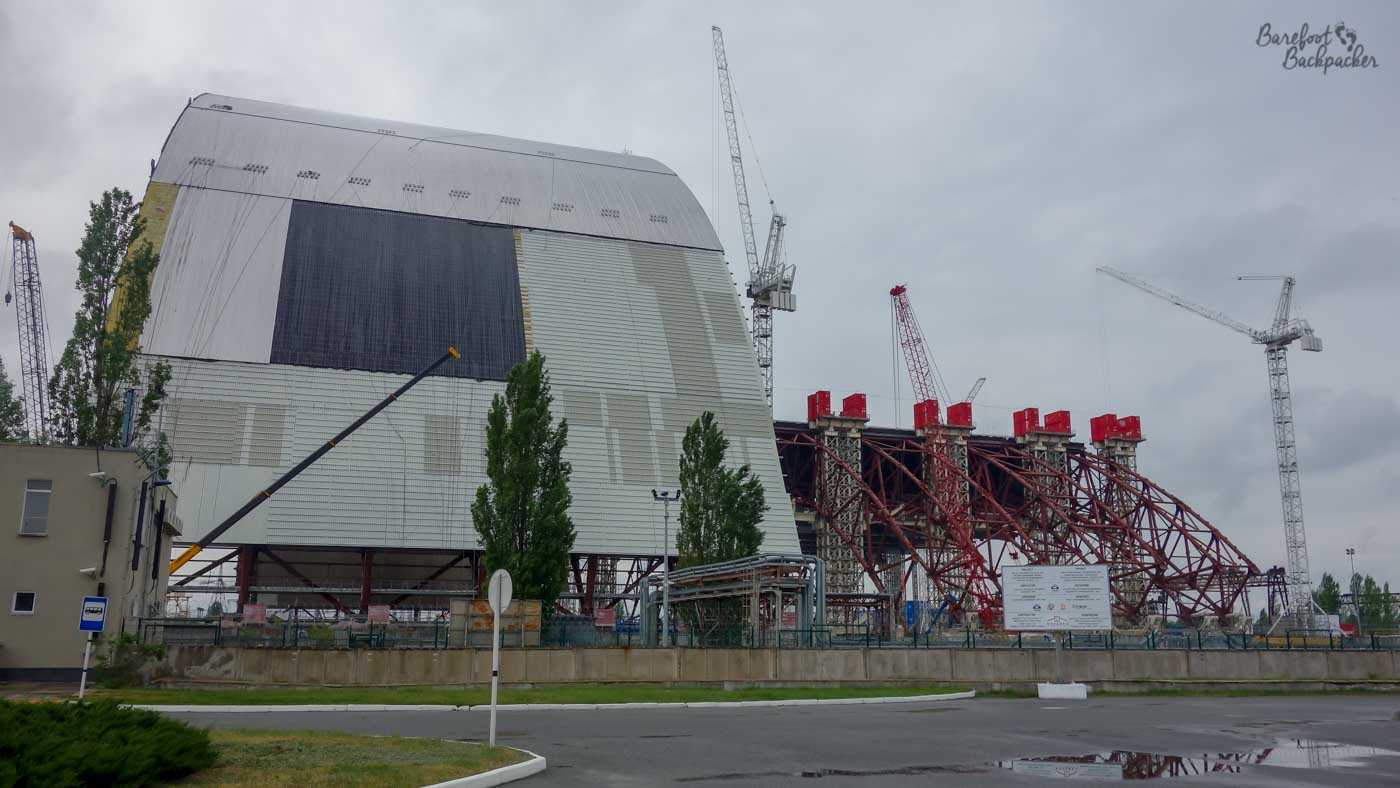
The replacement (2014) shielding being readied to cover the reactor
They never returned.
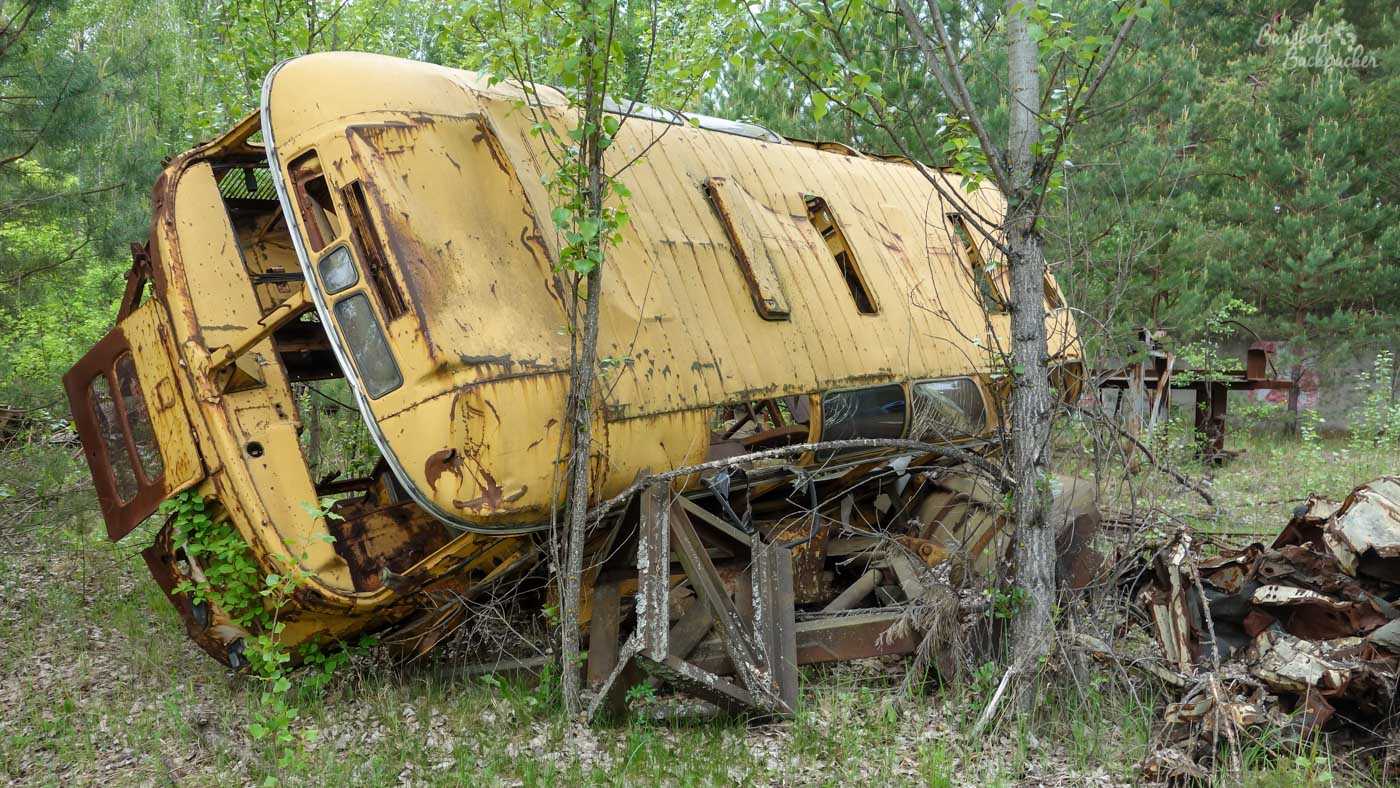
A broken and abandoned bus – a school-type bus, but probably similar to what evacuated the populace
Where did the Pripyat evacuees go?
In late 1988, Pripyat’s citizens were relocated permanently to the newly-built town of Slavutych, some 40km to the north-east. Two exclusion zones were set up around the power plant, one at 10km and the other at 30km. Over the years the latter has expanded to now cover an area of just over 2,500 km², or slightly larger than Dorset. No-one’s allowed to live in these areas. Officially. You can read more about the exclusion zones here.